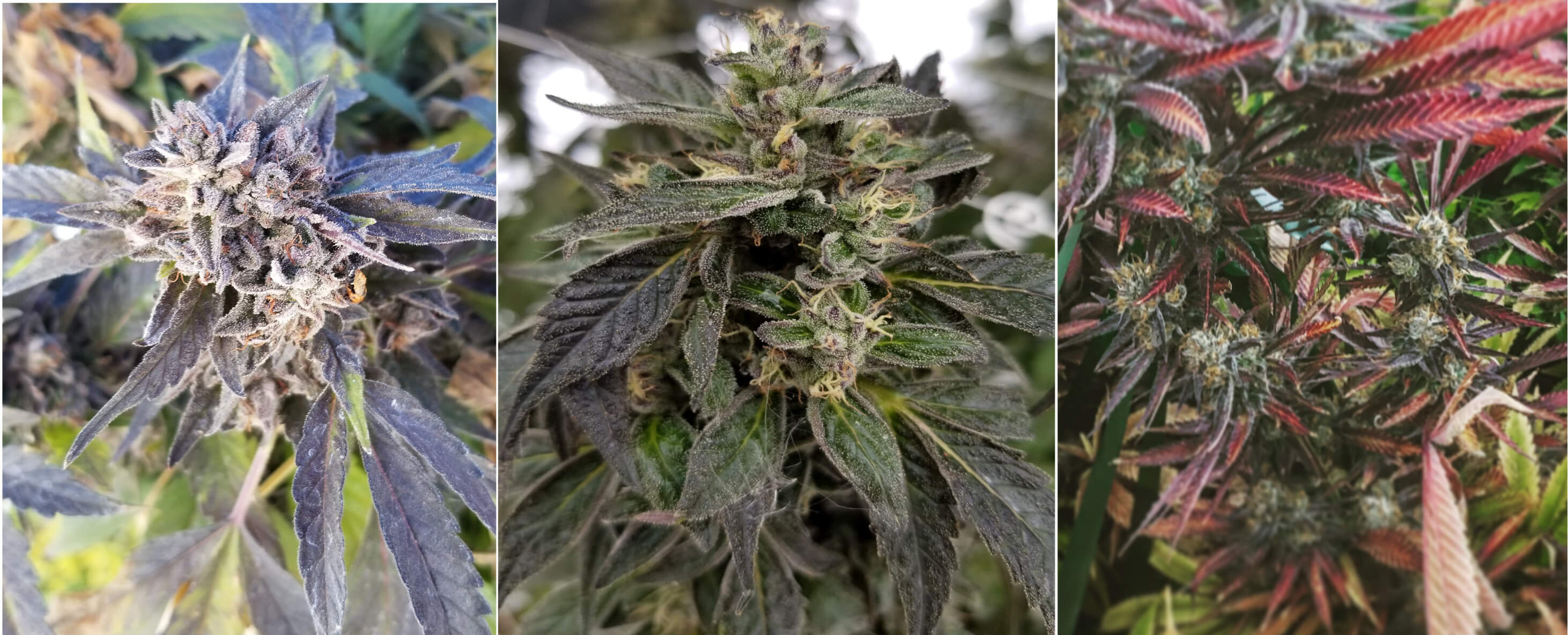- What Are Flavonoids?
- Anthocyanin: Purple Cannabis
- Affecting Flavonoid Expression
What Are Flavonoids?
Flavonoids are a class of plant pigments and chemicals that provide plants their various colors depending on a variety of factors. This class of plant pigments and chemicals is not unique to cannabis and there are several different flavonoids that affect different species of plants in varying degrees. Common flavonoids include quercetin, carotenoid, and anthocyanin but there are lots more. There are thousands of flavonoids that have been discovered and documented with their functions spanning a diverse spectrum and have been found in flowers, in fruits, and in vegetables. There are even some that are unique to cannabis known as cannaflavins, but their functions are not wholly known. As terpenes affect people’s sense of smell and how cannabis is perceived through their nose, scientists know that flavonoids affect people’s sense of sight and how cannabis is perceived through their eyes.
There were about 20 flavonoids identified in the Cannabis plant by 2008, but there are still more to identify (Flores-Sanchez and Verpoorte, 2008). Cannabis plants can be full of different pigments including different hues of green, yellow, orange, red, purple and sometimes even blue or black. However, only certain flavonoids are expressed throughout a cannabis plant’s life cycle such as to filter ultraviolet light or towards the end of a plant’s life to attract pollinating insects (Andrew, 2016). As the plant ages, the flavonoids expressed might change due to additional factors such as grow medium pH and ambient temperature. These factors are heavily dependent on the genetics of the plant being grown as to what their flavonoid expression will ultimately be.
Anthocyanin: Purple Cannabis
Anthocyanin among other flavonoids are responsible for giving cannabis plants their red, purple, blue, or black hue. In berries, anthocyanin may appear red, purple, or even blue in color (Wallace, 2015). Throughout the plant’s life cycle, anthocyanin is cloaked by chlorophyll which is green in pigment preventing any other colors from revealing itself. As the plant nears the end of its life cycle, the chlorophyll breaks down and the anthocyanin as well as other flavonoids alter the pigment on parts of the plant. These bright colors also serve a purpose usually to attract insects for pollination in an effort for the plant to reproduce. A plant’s genetics more or less determines these levels of flavonoids. This is why only certain strains of cannabis turn different colors such as purple and why certain strains turn certain degrees of a certain color. Once you have the proper genetics, you can take the proper steps to maximize the pigment change from green to a possible variety of colors. Common cannabis strains that will turn purple (containing anthocyanin) include:
- GDP
- Grape Ape
- Purple Alien
- Juicy Fruit
- Purple Diesel
It should be noted that cannabis containing the flavonoid anthocyanin is mostly a novelty. It does not directly affect potency or taste, but affects cannabis visually. If the cannabis genetics have anthocyanin, you can alter the environment’s temperature in an indoor setting to change the color of the plants and flush with water that has a pH of 7.
Affecting Flavonoid Expression
Since plants change colors in the fall when temperatures drop, night time temperatures can be as low as 50°F to help break down chlorophyll and activate anthocyanin (Franciosi, 2016). It is recommended to start lowering the room temperature in late flower with about 3 weeks before harvest to provide enough time to produce enough colorful pigments in the plants before you chop them down. Evidence also suggests that plants grown in a grow medium with a more alkaline pH (7pH) will help activate anthocyanin as well. From my experience this has worked well for me by flushing the last 7 days of flower before harvest with filtered water at 7pH in a soilless mix.

Comments powered by Talkyard.